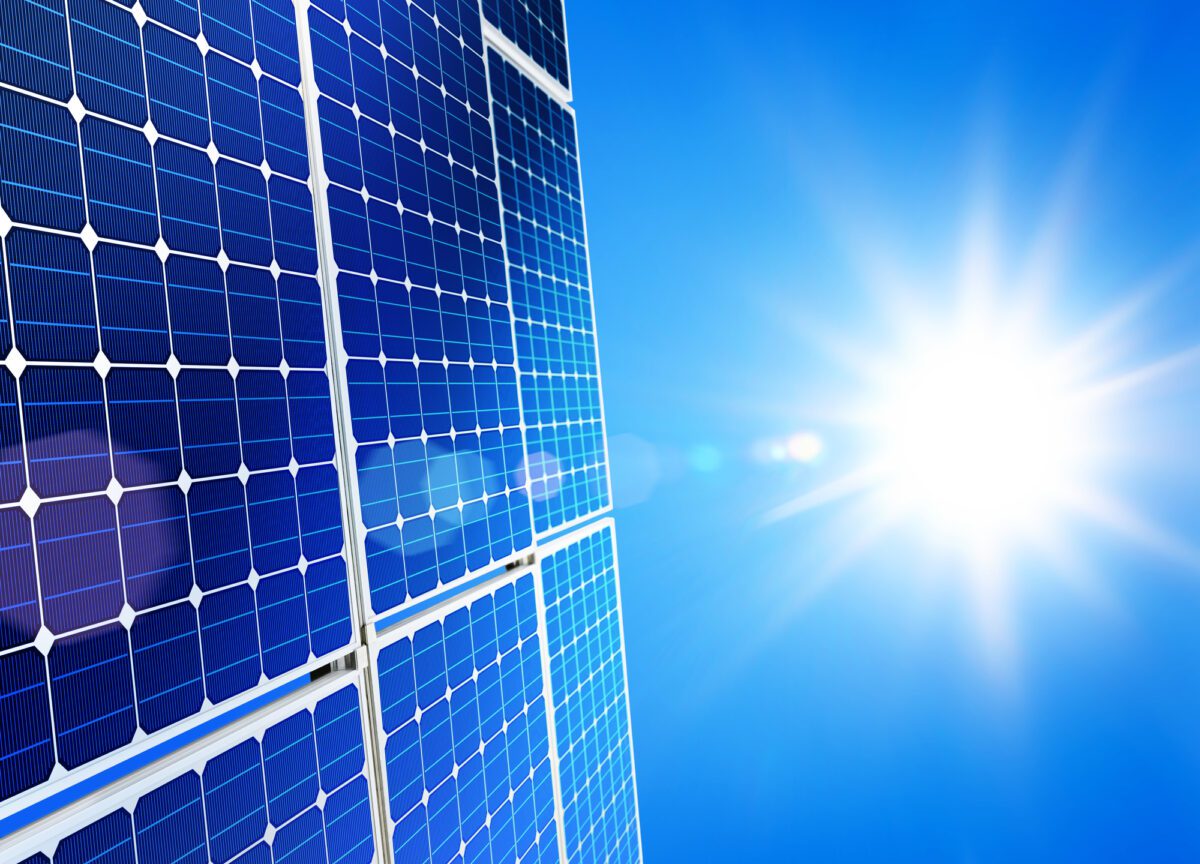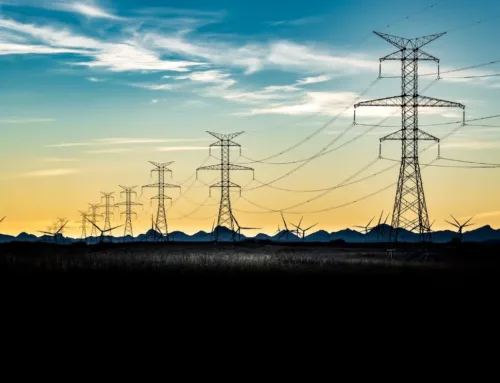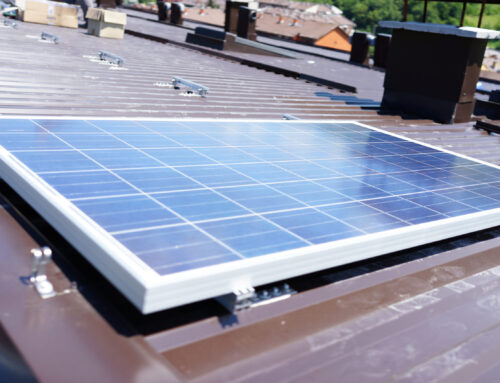Did you know that solar power plays a vital role in disaster relief efforts, emergency preparedness, and natural disasters? The use of solar energy has become a game-changer, providing emergency power during power outages and ensuring reliable electricity during emergencies. In disaster-stricken areas with power outages, initial installation of renewable energy solutions like solar equipment can change the face of darkness into light, making communication and access to clean water possible while addressing electricity disruption and the need for energy infrastructure. With its crucial role in powering essential equipment and providing light to homes, renewable energy solutions such as solar power are now more important than ever in these situations. Its ability to provide a consistent source of energy, such as gas generators, makes it a vital player in addressing the urgent need for power during disasters.
Solar Power in Disaster Relief
Solar power serves as an immediate energy source in disaster relief efforts for natural disasters, offering advantages over gas generators and providing light. When traditional power sources in the energy sector are disrupted by natural disasters, solar panels can swiftly generate electricity without relying on fuel or infrastructure, ensuring energy security. This reduces the time required for deployment and lessens dependence on conventional resources, enhancing energy security and disaster resilience in disaster relief operations with reliable power. For instance, after a hurricane or earthquake, solar energy can be harnessed quickly to provide essential power, aiding in rescue and recovery operations for disaster resilience, relief organizations, and households.
In addition to this, when water treatment plants in the energy sector lose electricity during disasters, solar power becomes crucial for ensuring continuous operation. By harnessing solar energy, these facilities can maintain water purification processes even amidst power grid failure.
Furthermore, hospitals and emergency response centers heavily rely on uninterrupted electricity supply from the energy sector for life-saving equipment. Solar-powered systems in the energy sector guarantee disaster resilience by providing a reliable alternative to traditional power sources.
Advantages in Emergency Situations
Reliability and Independence
In emergency situations, solar power stands out for its reliability and independence. Unlike traditional energy sources, solar power remains unaffected by fuel shortages or transportation disruptions. Independent solar systems ensure continuous access to electricity, providing emergency power even when the main grid is damaged or inaccessible. This means that relying on solar energy guarantees a steady source of power during challenging circumstances.
The decentralized nature of solar energy reduces vulnerability to centralized power failures, providing resilience against prolonged outages caused by natural disasters or infrastructure damage. With solar panels, communities can maintain basic electricity needs and have emergency power even when the grid is offline. This enhances their ability to cope with emergencies effectively and ensures a more sustainable approach to disaster relief efforts by utilizing emergency power and solar energy systems.
Cost-Effectiveness
Another key benefit of solar power in disaster relief operations is its cost-effectiveness in the long run. Once installed, solar panels require minimal maintenance and have low operational costs compared to traditional fuel-based generators for emergency power. By investing in solar energy, organizations can achieve significant savings over time while ensuring continuous access to electricity for essential services during emergencies.
Solar Panels for Preparedness
Disaster Management
During disasters, solar power becomes essential for maintaining communication and coordination. Solar-powered devices like radios and phones can be charged independently, without relying on the grid. This ensures that emergency responders and affected communities have access to crucial communication tools, solar energy systems, supporting effective disaster response and aiding in coordinating relief efforts.
In addition to communication needs, solar energy also powers medical equipment, lighting, and water purification systems in disaster-affected areas. For example, during hurricanes or earthquakes when traditional power sources are disrupted, solar panels provide a reliable source of electricity for running essential medical devices and ensuring adequate lighting in healthcare facilities.
Scalability and Portability
One significant advantage of solar power is its scalability. In disaster situations where the demand for electricity fluctuates rapidly based on changing needs, solar power systems can be easily scaled up or down to meet these requirements effectively. Portable solar panels further enhance this adaptability by allowing quick deployment wherever needed while offering flexibility in providing energy solutions, including emergency power.
The modular nature of solar technology enables customization based on specific requirements as well as rapid installation even in challenging terrains or conditions such as remote rural areas affected by disasters, providing emergency power.
Rural Electrification
Solar power plays a vital role in rural electrification efforts globally but is especially critical during disasters when traditional grid infrastructure may be compromised. By harnessing solar energy, remote communities with limited access to electricity and emergency power can overcome energy poverty and improve their quality of life significantly. Solar-powered microgrids bring electricity to underserved rural areas not only during normal circumstances but also enhance resilience during disasters by ensuring continuous access to clean energy.
Reducing Fossil Fuel Dependency
Solar power plays a crucial role in reducing greenhouse gas emissions during disaster relief efforts. When natural disasters strike, the use of solar energy instead of traditional fossil fuels helps minimize harmful emissions that contribute to climate change. By embracing renewable energy sources like solar, we can build resilience against the adverse effects of climate change.
Transitioning to solar energy not only aids in disaster preparedness but also contributes to climate change adaptation. For example, using solar-powered generators and panels during relief operations reduces reliance on fuel-based equipment, thereby lowering greenhouse gas emissions.
Embracing renewable energy sources like solar mitigates the impact of disasters on the environment. In contrast, relying solely on fossil fuels can exacerbate environmental damage when responding to disasters such as hurricanes or wildfires.
Incorporating solar power into disaster relief strategies promotes sustainable energy policies at local and national levels. Governments have the opportunity to prioritize investments in renewable energy as part of their disaster management plans. By integrating solar energy into policy frameworks, long-term sustainability in emergency response efforts is ensured.
For instance, by incentivizing the installation of solar panels in communities vulnerable to natural disasters, governments can reduce their dependence on non-renewable resources while simultaneously preparing for potential emergencies.
Impact on Disaster Response and Recovery
Post-Disaster Recovery
Solar power plays a crucial role in post-disaster recovery by providing a reliable source of energy for rebuilding efforts. For instance, solar panels can power construction equipment, lighting, and temporary shelters. This enables communities to recover faster and more sustainably after a disaster. By utilizing solar energy, the reliance on traditional fuel sources is reduced, minimizing damage to the environment.
In addition to this, social development impacts are significant as solar power improves access to electricity in vulnerable communities. Electricity from solar energy enables education, healthcare, and economic opportunities in disaster-prone areas. The use of solar power contributes to the overall well-being and resilience of affected communities.
Social Development Impacts
The positive impact extends further as it empowers households to cope with the aftermath of disasters by providing essential electricity. Solar-powered lights and chargers enable families to stay connected and meet basic needs during emergencies. By having access to solar energy, households can better adapt and recover from disaster situations.
Empowering Through Solar Energy
Community Resilience
Solar power plays a crucial role in enhancing community resilience during disasters. By reducing dependence on external aid, communities equipped with solar systems can continue their daily activities and support each other in times of crisis. The self-sufficiency provided by solar energy strengthens the overall resilience of affected communities, allowing them to maintain essential services even when traditional power sources are disrupted.
During disasters, such as hurricanes or earthquakes, access to electricity is often compromised. However, with solar energy systems, communities can ensure that critical facilities like hospitals, shelters, and communication centers remain operational. For example, after Hurricane Maria devastated Puerto Rico in 2017, solar-powered microgrids were instrumental in providing electricity to remote areas where traditional power infrastructure was severely damaged.
Innovative Technology Adoption
The use of solar power in disaster relief encourages the adoption of innovative technologies within the disaster management sector. Advancements in solar technology contribute to more efficient and effective relief operations by providing sustainable and reliable sources of electricity. Embracing solar energy fosters innovation within disaster management practices and promotes the development of cutting-edge solutions for addressing humanitarian crises.
Innovative applications such as portable solar generators have been deployed in various disaster-stricken regions worldwide to provide immediate access to electricity for medical equipment and emergency communication devices. These technological advancements not only improve response efforts but also pave the way for sustainable long-term recovery strategies that prioritize renewable energy sources.
Vulnerable Communities Support
In times of disasters, vulnerable communities are disproportionately impacted by disruptions to essential services like electricity. However, solar power provides crucial support to these marginalized groups by ensuring equal access to electricity during emergencies. Accessible solar solutions enable vulnerable communities to meet their basic needs independently while reducing reliance on centralized electrical grids that may be susceptible to damage during disasters.
For instance, initiatives focusing on installing community-based solar energy systems
Challenges and Opportunities
Implementation Challenges
The implementation of solar power in disaster relief encounters several challenges. Limited funding and resources can hinder the widespread adoption of solar energy solutions. For instance, in remote areas or underdeveloped regions, accessing funds and resources for implementing solar power systems may be difficult.
Overcoming logistical barriers is necessary for the successful integration of solar power in relief operations. Imagine a situation where transporting solar panels to disaster-stricken areas becomes a major challenge due to damaged infrastructure or inaccessible roads.
Opportunities in Relief Efforts
Despite these challenges, solar power presents opportunities for collaboration and innovation in disaster relief efforts. Partnerships between governments, NGOs, and the private sector can drive the adoption of solar energy solutions. This collaborative approach ensures that all stakeholders work together to overcome challenges related to funding, resource accessibility, and logistics.
Embracing solar technology opens avenues for new approaches to disaster response and recovery. These new approaches could involve using innovative solar-powered devices such as mobile charging stations or portable water purification systems during relief efforts.
Future Outlook and Policy Directions
Climate Mitigation Motivation
The role of solar power in disaster relief acts as a significant motivator for climate change mitigation efforts. By reducing reliance on fossil fuels during emergencies, we contribute to global emission reduction goals. For instance, when solar energy powers emergency response operations instead of traditional generators, it minimizes the release of harmful greenhouse gases into the atmosphere. This highlights how solar energy serves as a catalyst for sustainable practices beyond immediate disaster response, positively impacting environmental conservation.
Furthermore, embracing solar power can lead to long-term benefits by promoting sustainable policies and practices post-disaster. It encourages the adoption of renewable energy sources over non-renewable ones, thereby contributing to ongoing climate change mitigation strategies.
Ongoing Emergency Power Access
In times of extended emergency situations, solar power ensures ongoing access to electricity. Properly designed storage systems enable solar energy to provide continuous power even when sunlight is limited or unavailable due to adverse weather conditions or natural disasters. This reliability makes solar power an invaluable asset for long-term emergency preparedness plans.
With advancements in technology and infrastructure development, integrating solar panels with battery storage solutions has become increasingly feasible and cost-effective. This enhances the resilience of communities facing frequent or prolonged emergencies such as hurricanes or wildfires.
Toward Sustainable Policies
The use of solar power in disaster relief highlights the need for sustainable policies and practices within governmental agencies and organizations involved in disaster management frameworks. Governments can prioritize renewable energy integration into their disaster management strategies while organizations can align their relief operations with sustainable approaches that reduce environmental impact.
Frequently Asked Questions
How does solar power contribute to disaster relief efforts?
Solar power plays a crucial role in disaster relief by providing a reliable and renewable source of energy. It enables the operation of essential equipment, such as communication devices and medical facilities, even when traditional power sources are disrupted.
What advantages does solar power offer in emergency situations?
In emergency situations, solar power provides a sustainable and independent energy source that can be quickly deployed. Its reliability reduces dependency on fuel supply chains, making it an ideal solution for powering critical infrastructure during disasters.
How do solar panels contribute to preparedness for natural disasters?
Solar panels enhance preparedness by offering a resilient energy source that can operate independently of the grid. They provide continuous electricity for charging essential devices and maintaining communication systems before, during, and after a disaster strikes.
What is the impact of using solar power on disaster response and recovery?
Utilizing solar power enhances disaster response by ensuring consistent access to electricity for emergency services and relief operations. During recovery phases, it facilitates the restoration of vital services while reducing reliance on finite fossil fuels.
Are there any challenges associated with integrating solar power into disaster relief efforts?
Challenges include initial setup costs, logistical considerations for deployment in remote areas, as well as potential limitations based on weather conditions. However, advancements in technology continue to address these challenges while expanding opportunities for utilizing solar energy in disaster relief scenarios.


 Solar Company
Solar Company 



